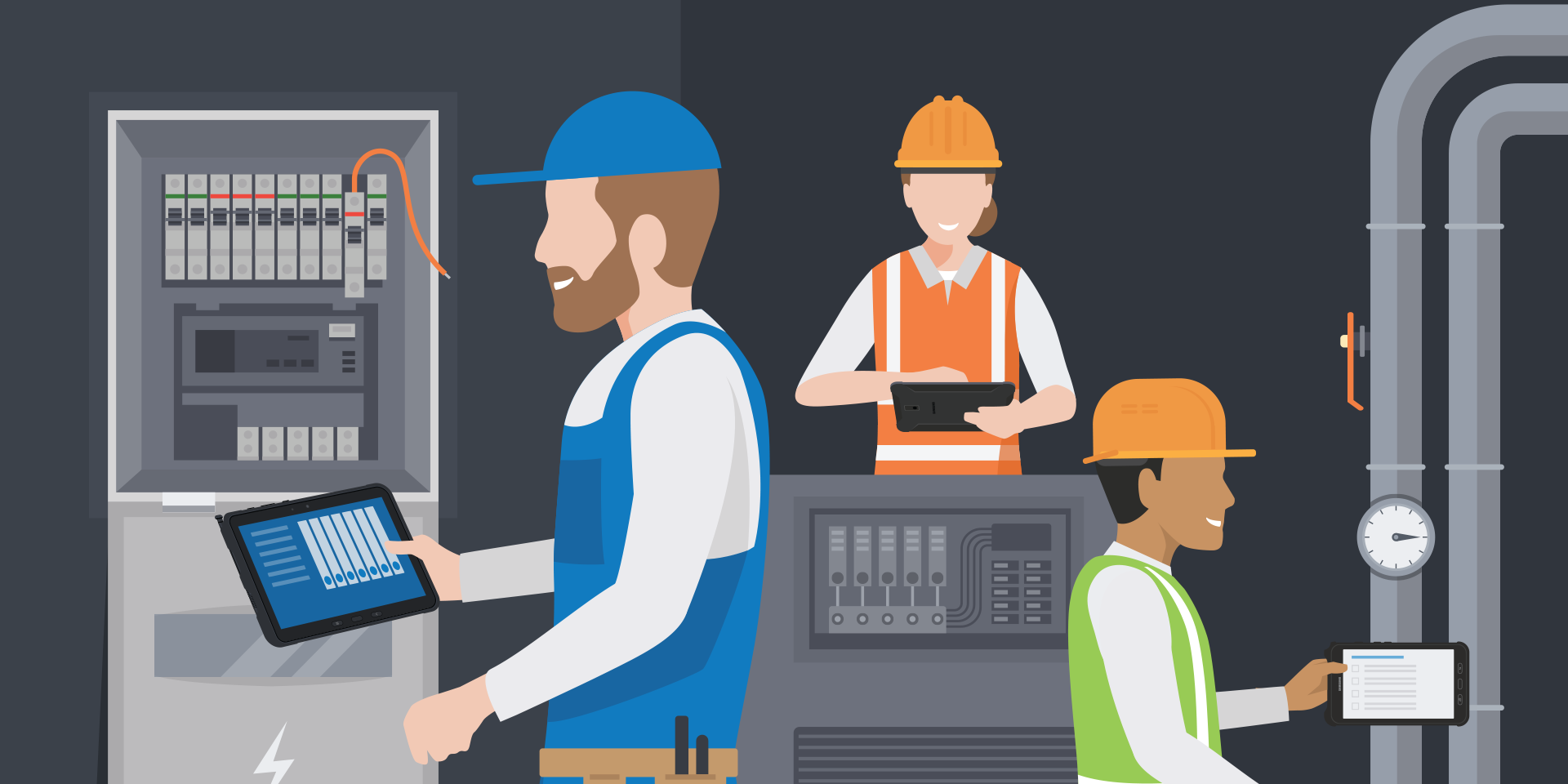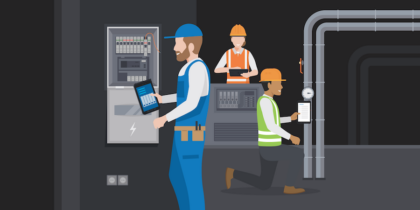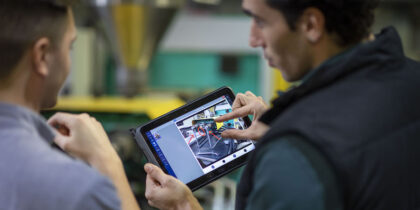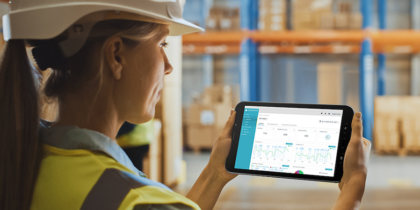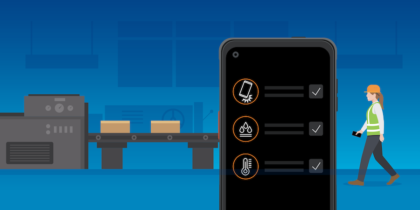Frontline workers may feel as if they’re on an island — working solo on-site, with their nearest colleagues back at the office or even in different time zones. Without effective collaboration technology, your frontline employees may take longer to resolve issues or be forced to make repeat visits to a customer site. In these cases, project timelines can be delayed, resulting in lost revenue or more serious consequences if customers become dissatisfied.
Frontline workers need communication solutions that are tough enough to perform reliably in difficult conditions. Rugged mobile devices can help organizations across diverse industries improve their frontline collaboration.
Investing in the right collaboration solutions gives frontline workers access to the proper tools, information and expertise they need to be effective in the field. Here are a few tech-focused suggestions to help you strengthen your frontline workers’ ability to collaborate.
1. Use PTT to improve worker communication
In a recent survey of 450 professionals working in frontline and field service teams conducted by IPSOS and Samsung, lack of technological support was cited as the second-biggest business challenge brought on by the COVID-19 pandemic. Cloud-based push-to-talk (PTT) solutions on a rugged mobile device can help solve this issue.
Over-the-top PTT apps, integrated on devices like Samsung’s Galaxy XCover Pro, deliver familiar radio or walkie-talkie-like capabilities with the push of a single button, even with gloved hands. Frontline workers don’t have the time to launch a dialer app and punch in phone numbers when they’re facing an issue, so outfitting your people with rugged mobile devices that feature reliable push-button PTT capabilities can make real-time collaboration faster and easier.
2. Automate mobile collaboration workflows
Help your frontline workers unlock greater collaborative potential by combining streamlined communications with greater workflow automation.
Creating group chats can help automate your ability to provide specific teams with updates or reach everyone interested in a specific topic. Updates can quickly reach the entire team, eliminating the need for cumbersome check-ins and reducing the chances of key messages being missed.
3. Integrate with line-of-business productivity applications
Equipping your team members with line-of-business productivity applications can give them access to the content and conversations they need on demand. Be sure to choose mobile devices that integrate with mobile communication platforms such as Microsoft Teams, and consider creating dedicated channels for specific issues or clients.
Frontline workers are no longer limited to reaching out to their team members over land mobile radio, as all that’s required to use applications of this kind is an internet connection.
Workers can also use Knox Capture with their smartphone cameras to securely take pictures and videos of what they’re working on and share them with colleagues. A worker who is on-site overseeing an urgent repair can capture video or picture with a mobile device and then share it with expert advisors or supervisors, providing real-time project updates. The advisors could then share feedback by, for example, drawing instructions on the pictures or schematics to expedite the on-site work.
4. Improve remote support with augmented reality features
Complex on-site work sometimes requires specialized support. For these cases, Librestream offers an augmented reality (AR) app for diagnosing, inspecting and maintaining assets, and it’s easy to view the relevant information on the Galaxy Tab Active3 rugged tablet.
Repair technicians in the field have traditionally been limited to their own knowledge or what they can find in a manual. Misdiagnosed issues or unclear work orders could cause lengthy delays in getting the right expertise on-site. With AR tools, experts can easily collaborate with less experienced technicians to offer enhanced support and guidance as they conduct their work in the field.
Empower your field services team with mobility
Exceed customer expectations with this free guide to improving connectivity in field services. Download Now
If a field worker identifies an issue that requires advanced engineering capabilities to resolve, they can use their Tab Active3’s high-definition camera and flexible connectivity to share photos or videos of the scene. Back at the office, an expert engineer can ask questions, provide directions and oversee the job step by step to help resolve the issue.
In addition to reducing downtime and increasing success rates, AR apps also offer the long-term benefit of greater employee satisfaction and workforce retention. As field services and other technical roles see more team members retire, rugged mobile devices can empower a new generation of successful field workers to tap into advanced support when they need it.
Support frontline collaboration
Collaborative technologies are essential to helping field workers address their most challenging issues. With rugged devices that hold up in difficult circumstances, strong communication channels, and apps that enable greater collaboration, frontline teams can create more value for their organizations more conveniently than ever before.
Field service teams need more reliable connectivity than most. Before you decide on a mobile device for them, consider deploying a smartphone or tablet powered by 5G connectivity, the fastest and most secure wireless network on the market. Increase your odds of exceeding customer expectations with Samsung’s free guide on improving connectivity in field services.

